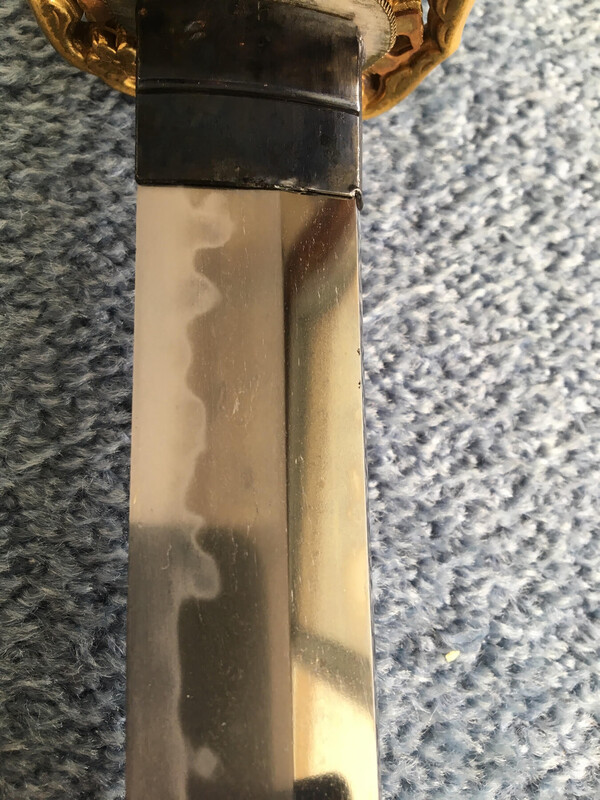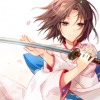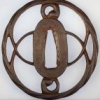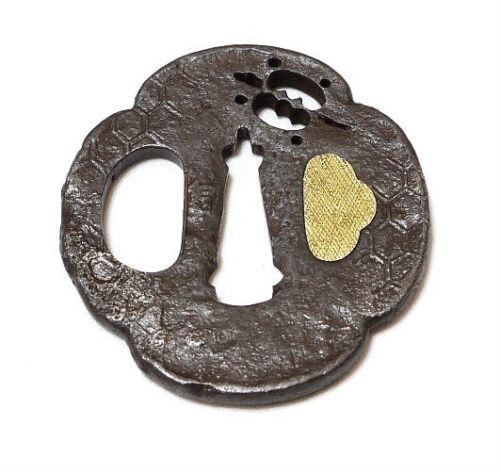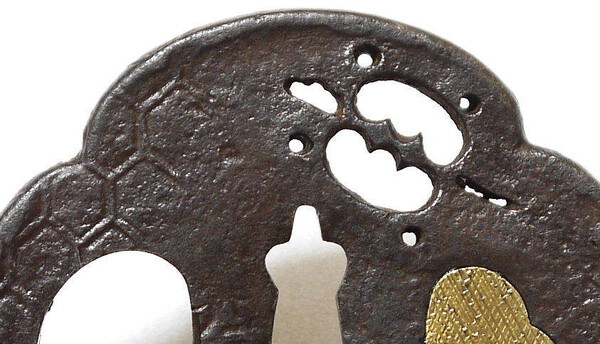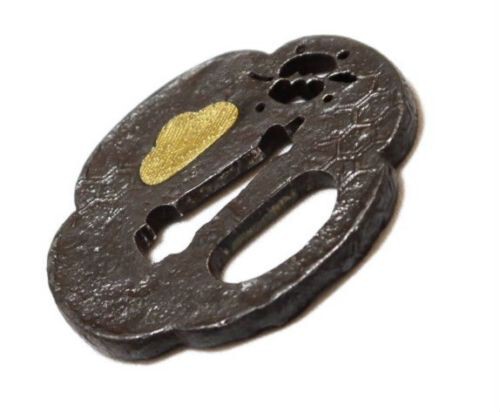Leaderboard
Popular Content
Showing content with the highest reputation on 02/26/2021 in Posts
-
Goto Seijo Seijo, also known as Mitsutoyo, died in 1734. As a school founder, he made only a few tsuba. The other of the school, Seijo-Mitsuzane (died 1750), worked in relief and also made posts in the nunome style. He often used the water kite in his work and happy and beautiful flowers. During this time there was a demand for foreign designs, and this school proved to be many Tsuba in Canton and Namban style. Nidai and onwards used the same signature, 'Seijo'. The sixth Seijo, also known as Harumitsu, Sessai or Shiunchin, was known for its excellent compositions and details. The third to seventh generation worked in Edo, and lived in Shitaya and was known as Shitaya Goto.4 points
-
I also think the gimei yasunori is a real nihonto or at least I wouldn’t call it a fake just from the images. The blade I have posted is made by Ozawa shigenori and won nyusen price 2017. Some people wouldn’t even realize the treasure in front of them being overly suspicious (Not me downvoting anything btw)3 points
-
That is the 1986 F&G book. In the back of the book, there is a handful of oshigata. Fuller, Richard, and Ron Gregory. Military Swords of Japan, 1868–1945. London, GB: Arms and Armour, 1986.3 points
-
I second namikawa Heibei. Bought a few things from them in the past, and they're very responsive and great to deal with.3 points
-
Well, what do we have here from the Netherlands? Take a careful look at the mekugi. Also take note of the remnants of the leather scabbard retention system. Shin gunto(?) for review3 points
-
The closest Japanese word for arsenal or armory (armoury) is 工廠 [kōshō]. The army used this term until 1940 and then changed to 造兵廠 [zōheishō]. Even though zōheishō is translated into English as arsenal, it would be better to think of it as an arsenal complex.3 points
-
2 points
-
2 points
-
And they are OK with Pay Pal. It is worth remembering that a lot of the better quality "local to you" dealers buy from Namikawa and then sell on to you with a markup.2 points
-
Hi Axel, For me they just that aren't that impressive from a size point of view. Eighteen by 12.5cm isn't a lot of spear when it comes down to it. They're a nice item when they come with a pole and saya but if I had money to spend I'd more than likely prioritise another purchase.2 points
-
Just a short update on a design from the Chösen Gafu book, the design is of two iron workers pliers [found at the top of page 11] a tsuba from the collection of Georg Oeder [no. 376a/b] shows two pliers of different sizes laid out in a more artistic way. Was just wondering, is this just a coincidence ? Steven King sent me a link to a tsuba with a Tanuki looking at the moon, there are several similar designs in the book - but this one has been to Weightwatchers and is not as 'rotund' as shown in the collage.2 points
-
Dear Bob, Lovely Tsuba. As you may know, Masatsugu worked in the late 1700’s in Kyoto and the surrounding area (including at Fushimi - the famous Inari Shrine in Kyoto). Your Masatsugu is Haynes H04701.0 and matches the mei and kao in several books (including Sesko’s Signatures of Japanese Sword Fittings Artists - but it should match because it’s your Tsuba on the bottom right of page 227 - right?). In the late 1700’s in Japan, Ginkgo Leaves could have symbolized several different things: Fall, endurance, longevity or the Urasenke School of Tea Ceremony (it is their emblem). In the case of falling ginkgo leaves like those on your tsuba, endurance and longevity are not likely themes. While Fall is a possible motif, I believe that your tsuba was probably made for a Samurai who was a member of the Urasenke School of Tea Ceremony. I reach that conclusion because Masatsugu worked in and around Kyoto (near the headquarters of the Urasenke School), and because I have seen several tea ceremony articles related to Sekiō Sōshitsu (who was the 9th Master of Urasenke during the time your tsuba was made) with this kind of falling ginkgo leaves design (and this is the emblem of the Urasenke School). I love your idea for this thread and am looking forward to seeing more of your collection. The following are a couple of photos of tea utensils with falling ginkgo leaves (not necessarily related to Urasenke or Sekiō Sōshitsu) (by the way, one of the Sumo hairstyles is a Chonmage that symbolizes a ginkgo leaf, but I don't think your tsuba symbolizes tumbling Sumo Players...)2 points
-
I had a message from paypal to say the automatic payment had gone through.2 points
-
2 points
-
Namikawa Heibei has been very responsive when i ordered supplies, never had an issue.2 points
-
I'm always surprised when these types of yari pass by. Normally they, as far as condition goes a lot to want for unlike this one. Pricewise as well, curiously they don't seem to hold much financial value these days even though they were, as is written, difficult to make and tedious to have polished. How come there seems to be no real interest or market for these items? https://www.aoijapan.com/jumonji-yari-chikuzen-kuni-minamoto-nobukuni-yoshinao/ Just imagine.. those things are absolutely terrifying.1 point
-
I agree with John; well done. A few corrections and hints. 1. Take a look at where you've written "gomabashi", and the kanji to which you are pointing. There is a mistake there, and it may give you a clue as to one of your question marks. 2. I think the part after "Nakago" is referring to the number of mekugi-ana. It may be a typo in the original, or it may just be an abbreviationn that is well understood by sword afficionados. (Again, this may also give a hint at one of the question marks). 3. "Horimono" isn't the correct reading of this compound word. 4. "Nengo" is incorrect. Other than these minor errors, it looks good.1 point
-
I agree with the posts above. Yari are difficult to forge and jumonji are at the top of the difficulty range. Add to that the difficulty in polishing them. Add to that that they were considered utilitarian weapons, not to be preserved and cherished likes swords but to be brutally used and abused in warfare = not that many examples in great condition or by great masters remain nowadays. Size does not matter really - someone above was complaining about the size. In fact, the Aoi example is quite standard sized. I recommend those interested to have a look at the Knutsen book about pole arms. Also, it is the complete package with koshirae. In the U.K. I have seen worse examples commanding similar prices.1 point
-
1 point
-
1 point
-
Actually, I was more interested in menuki than in fuchi. Menuki was blocked by tuka-ito, and I couldn't see the back side with important information, so I was silent. At least it's patina, so it looks to me that it's probably made of an alloy that contains copper rather than gold. However, your ture-shishi looks much better than a cast mass-produced product. The image is one of the menuki converted into a cigarette pouch, and the gold was sold for $ 385 with unknown grade. The buyer was convinced that this was Goto. If that conviction is correct, it's worth it. The length of the mane, the distance between the legs, the expression of wrinkles on the eyebrows, the appearance of the eyeballs, the pattern of the body, etc. are all the points to distinguish the goto clan. I'm sorry it seems unfriendly. I don't seem to be useful, so compare for yourself. https://www.jauce.com/auction/o4532665151 point
-
1 point
-
The subject is of a famous Chinese scholar and strategist called Han Xin, circa 200BC. from wikipedia "On another occasion, a hooligan saw Han Xin carrying a sword and challenged him to either kill him or crawl between his legs. Han Xin knew that he would become a criminal if he killed him, so instead of responding to the taunts, he crawled between the hooligan's legs and was laughed at." Some versions of the story make the bully a fisherman who was intent on belittling Han Xin and amusing his fishermen mates. Han Xin complies and thereby demonstrates his humility. While the actual tsuba looks like it needs some careful restoration I would suggest the price was fair. I think it's a pretty decent bit of work and if restored well would look pretty grand. The bully's face is particularly well rendered and expressive, and the clothing folds and patterning is very good. A complex composition well executed. The mei appears to read Nobumori, possibly the Tanaka/Sonobe school artist. Student of the 3rd gen. master Nobuyoshi.1 point
-
1 point
-
Type 95s in general are common, but not the side-latches. There were something over 6,000 copper-handled 95s made but only 4,000ish of the side-latches.1 point
-
1 point
-
1 point
-
1 point
-
It looks like its certainly taken a beating. The kashira is a bit warped. Looks late Edo. As for quality... its about average to lower end. The mon looks off-center.1 point
-
Does it have a matching fuchi? I must have done this in my sleep. Error corrected!1 point
-
1 point
-
I am a sword collector, British, German, Japanese and from all over the place. Nihonto are just one area of my interest,... And Military blades (a big area of collectors interests generally.) another. Military swords sort of crop up when nations put national armies together, and medieval and ethnic collectors accept that this is a different area of collection and go elsewhere, collectors of such do not go onto Military sites and criticise collectors of Prussian Imperial Army blades for example. This sort of criticism seems to be unique to Japanese sword collecting. When Japan decided to "modernise" they took sword production to another place, while recognising and valuing their traditions. Perhaps Japanese sword collectors should do the same. Just saying, German collectors love the late war ersatz products, and respect them as a nation fighting to the end......1 point
-
1 point
-
Hi Tom, It looks like this is a shortened katana but might have been on the cusp between katana and wakizashi length - the distance between the two holes in the tang is a clue to how much has been taken away. Age wise I think this is mid 1600s as the shape looks like that which came into vogue around Kanbun, the era that started in 1661. Back to the reason for shortening, pre-1600 it was likely to be because of battle damage but after 1630 there were no battles so it’s a question of conjecture. It might have been damaged in a fight and so shortened or it might be that the owner needed a short blade and so cut down a katana. It looks like a well made blade with no obvious flaws beyond some fine scratches. That said, it’s probably not made by a significant smith as I think it probably wouldn’t have been shortened without some effort to preserve the signature and the value that would attach to it. I can’t identify the lone kanji that might give a clue to the maker. The fittings look to be mostly utilitarian though not unattractive. The lacquer work on the scabbard is very attractive, however, and some effort has been put into it. My feeling price wise is $1,200 to $1,500 (you may get different views on this) but you can have a look around for similar items to get a better feeling for value. What’s the asking price (if you’re looking to buy)?1 point
-
I enjoy swords and militaria from all nations, but WW2 swords used by the Japanese and their collaborators are my main area of interest. Not purely Japanese in make or art swords. I appreciate these as another fantastic and fascinating part of history, but I prefer general military history over purely Japanese sword history. I enjoy seeing all swords that are posted, find it educational and enjoy the discussions. Differences of opinions are welcome when presented in a constructive and evidence based manner. There has been a great deal of educational material compiled and a number of discoveries due to the tireless efforts of members and those willing to share and research. Thank you all. As a side note, I have a tiny collection of kaskara just because I like them. Not great pieces, not valuable, nor fancy. I buy one every few years if I particularly like it.1 point
-
1 point
-
1 point
-
1 point
-
1 point
-
Thomas Just a thought about the "治" mark Gunto. Many countries call the period under Japanese rule during WW2 日治時期,including 台灣(TaiWan),新加坡(Singapore),馬來西亞(Malaysia)and 印度尼西亞(Indonesia)etc. Is it possible the 治 could be the abbreviation 統治(Ruling)instead of 明治(Meiji) for the arsenal in occupied countries?Or even means the sword for 治安隊(public security force)use?1 point
-
1 point
-
Dave, are you hinting at '"sword snobbery"? I have said many times that a machine made NCO sword for example, is a genuine part of Japanese sword history, because it was taken to war the defend the Empire. The military sword cannot be ignored or passed off as inferior, tell that to the troops who carried it into war, or attacked a tank with it when they ran out of ammo! Anyway, a sword is made of 2 parts, a blade and Koshirae. The military Koshirae is unique/varied/interesting/beautiful. The blade can range from a family heirloom, to one made of mill steel. A photo attached of a ancestral blade in military mounts, and papered, is this an inferior sword?1 point
-
I get what you're saying, Dave. I think it's mainly because after the war, the Japanese swordsmiths and collectors had to move their craft out of the "Martial" and into the "Art" box. Japan was focused on getting past the war, and they focused on Nihonto as exclusively objects of art and culture. The huge number of non-nihonto swords made during the war were purposfully dismissed as all being low-quality and without any artistic merit, regardless of if that was actually the case or not. And when the Western collectors got into the game, they not surprisingly picked up this attitude up from their Japanese counterparts. I do like to think that boards like this are helping to change collectors' attitudes. There definately seem to be a lot more people collecting Japanese swords these days, both Nihonto and Showato. Look at how many swords sell on Ebay and the like. And the prices keep going up. Having a forum like this to come to, to learn and talk with other collectors is really the best way I can think of to improve the overall perception of Japanese Non-Nihonto blades.1 point
-
1 point
-
SUKETAKA (助高), Kōhei (康平, 1058-1065), Bizen – “Suketaka” (助高), Ko-Bizen school, according to tradition the son of Morikane (守包) SUKETAKA (助高), Kangen (寛元, 1243-1247), Bizen – “Bizen no Kuni Suketaka” (備前国助高), he is listed as ancestor of the Kokubunji school (国分寺) SUKETAKA (助高), 1 st gen., Kanbun (寛文, 1661-1673), Settsu – “Suketaka” (助高), “Suketaka saku” (助高作), “Settsu-jū Suketaka” (摂津住助高), Tsuda family (津田), younger brother of Wakasa no Kami Sukemune (若狭守助宗), he studied under Sukehiro (助広) and adopts also his workmanship, but the jihada stands somewhat more out and the tōran is smaller and more angular, he moved later to Fukuyama (福山) in Bingo province, chūjō-saku SUKETAKA (助高), 2 nd gen., Genroku (元禄, 1688-1704), Bingo – “Bingo Fukuyama-jū Suketaka saku” (備後福山住助高作) SUKETAKA (助高), 3 rd gen., Kyōwa (享和, 1801-1804), Bingo – “Suketaka” (助高), he lived in Bingo´s Fukuyama (福山) SUKETAKA (助隆), 1 st gen., Bunmei (文1 point
-
"Naginata Naoshi Katana" "Lacquer writing blank blank Iwahashi" "Mumei, Mihara" Issued "25 April Heisei 24" As above1 point
-
Hi Barry, The mei eventually reads: MORI ( 守 ) SADA saku. There was a Bungo Takada Katana with a similar mei in the Compton collection. It was papered "koshu tokubetsu kicho token" in 1975, so the mei can be considered genuine. It was sold at auction by Christies as lot Nr.306 (Part I) on March 31, 1992. The two mei are not precisely identical, but pretty close.1 point
-
1 point
-
This one was recently sold on ebay and wanted to know your thoughts. Oh, and congrats to the winner if it was a board member. Now a Tsuba with almost the same design was talked about in a previous thread here : http://www.militaria.co.za/nmb/topic/5539-nobuiye-with-questionable-manufacture-method/?hl=%2Bnobuie+%2Bturtle&do=findComment&comment=51757 Which school do we think? The large kozuka ana is quite different then the one in the linked thread. Thoughts? Dimensions Length 63mm, Width 60mm Thickness 3mm, most thick 5.5mm1 point




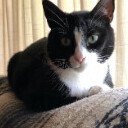
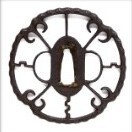





.thumb.jpg.43197e2d4c3461b5d940f3b6d95f61aa.jpg)
.thumb.jpg.ae70d9a2a5cafae06ed6a0a86e9b6624.jpg)
.thumb.jpg.eaeb3c7644e9996db3d1ad109b63a3fa.jpg)




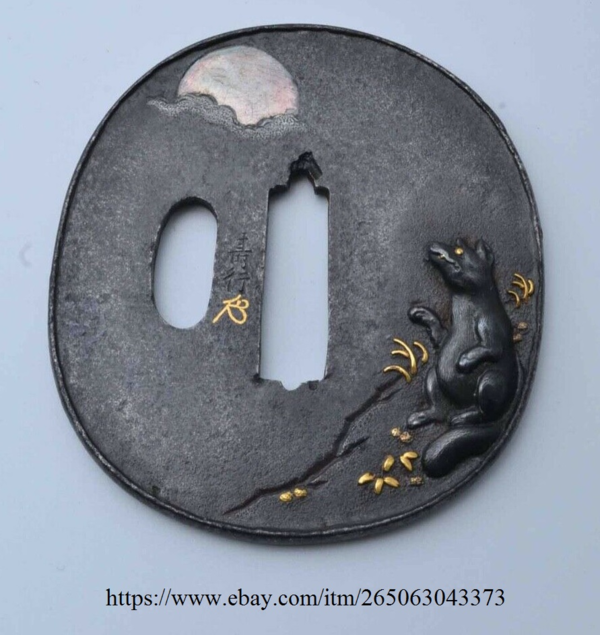


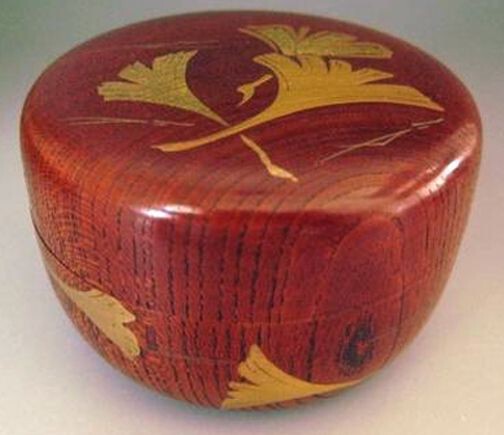
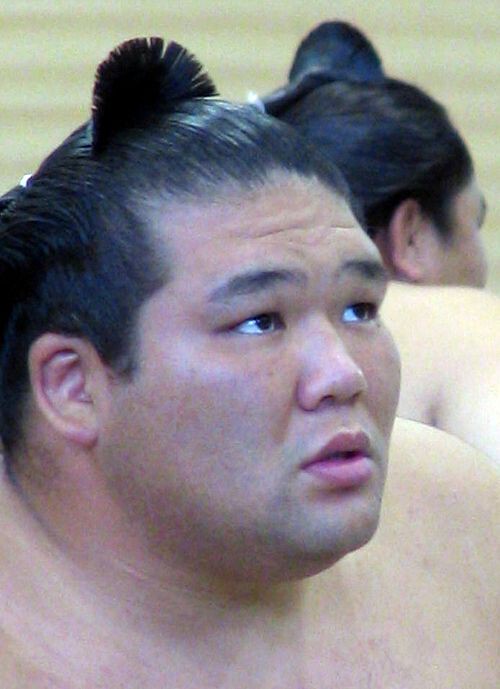



.thumb.jpg.ef1bdb58e7d3ab07f6982441f3c938b8.jpg)



(realnameKatoMatazo).thumb.jpg.006df0804ac9c50428242ed6f372e239.jpg)


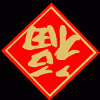

.thumb.jpg.bc10b59027a00aa142dce0349f3ba9e0.jpg)



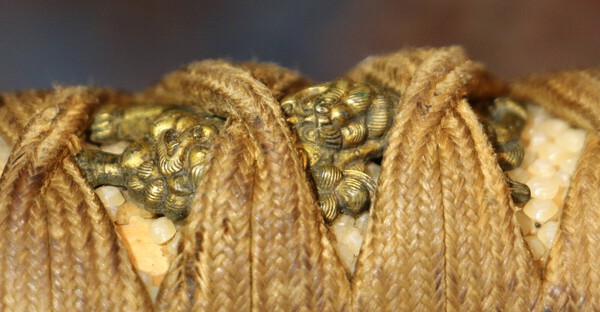

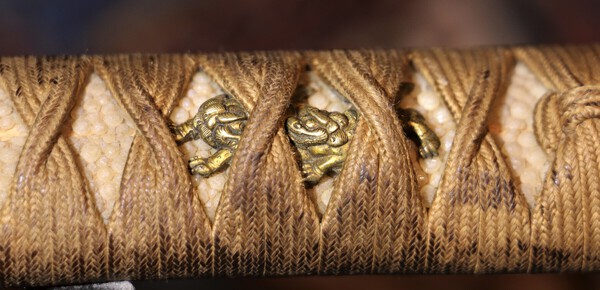


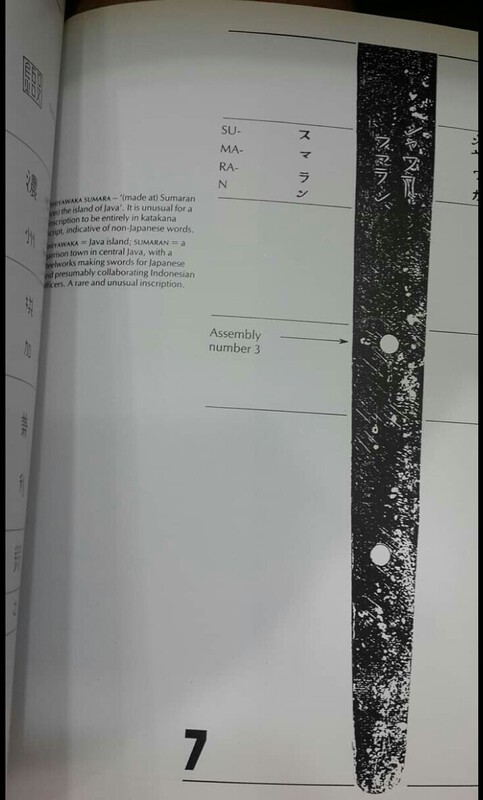
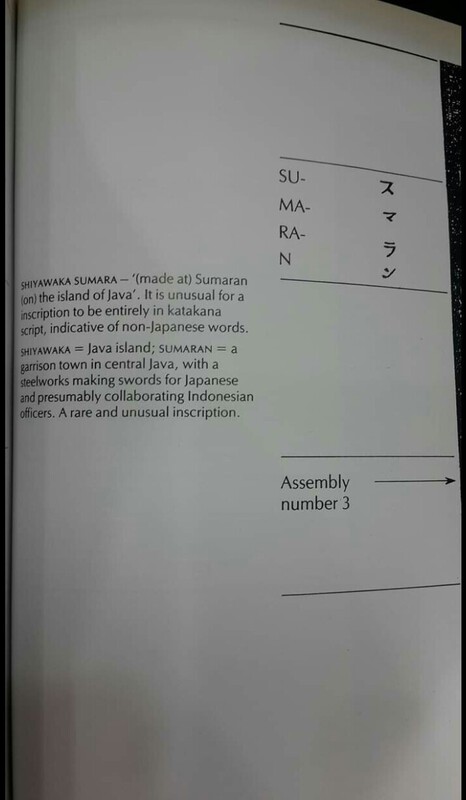


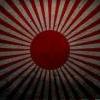


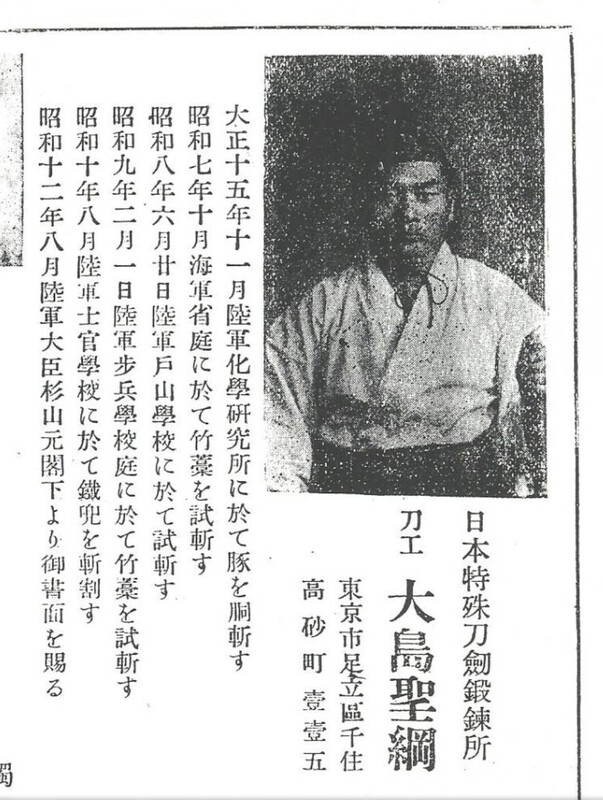

.thumb.jpg.8244e049257c4d859ff3d43202a345b0.jpg)



